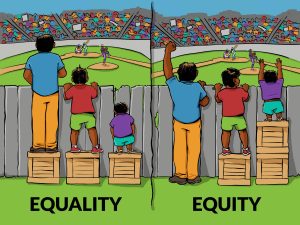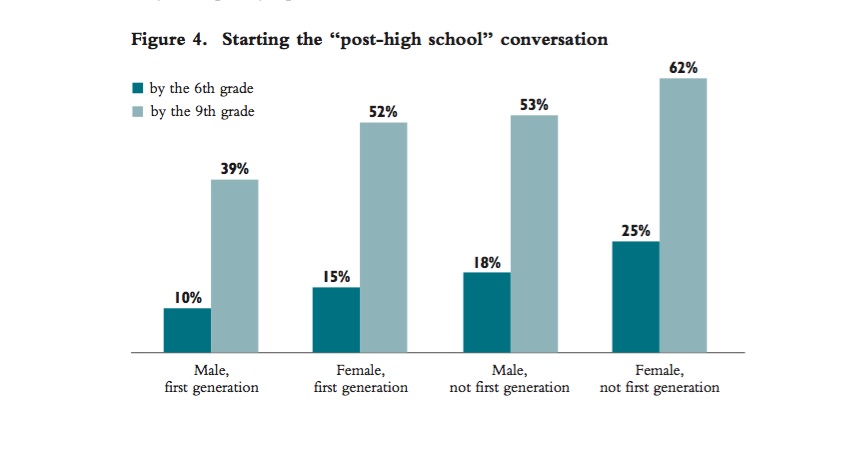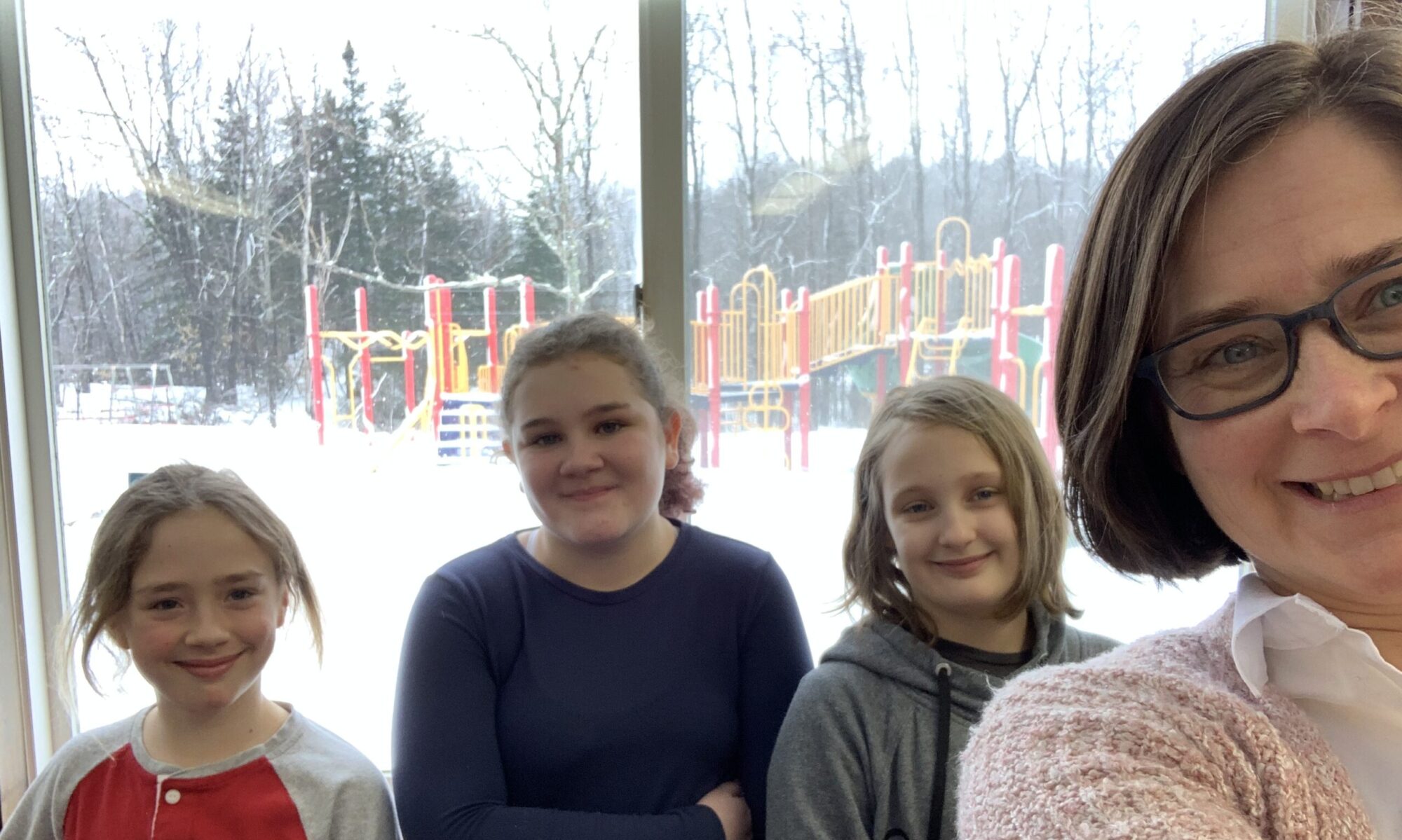Care about equity in education? Start with engagement
Educators care about equity. We all want to bring out excellence in our students, but the thing that keeps us up at night is our constant striving to do that for ALL of our students.
There are many systemic barriers to equity. Our students and schools mirror society, so the efforts of educators slam up against macro forces such as generational poverty, distressed families, institutional racism, and other forms of social injustice.
Yet we still have the power to light a spark.
To help our students find who they are, connect with school, and start on a path that could eventually lead to a successful and happy life.
Let’s remind ourselves that engagement is paramount.
And during the final months of the school year, we have the opportunity to experiment with personalized and project-based approaches so that we can improve our practice and leave our current students with an engaging culminating experiences.

What type of engagement focuses on equity?
I had a conceptual “ejector seat” moment the other day. I was reading an article in Teachers College Record, nodding my head and enjoying a smooth ride at cruising altitude, when I came upon a conclusion so turbulent that it catapulted me straight out of the article.
The research article, Two Models of Learning: An Explanation for the Achievement Gap. The author, Stuart Yeh, proposed a new way of thinking about the achievement gap that boils down to engagement:
The hypothesis is that the conventional school system is inadvertently structured in a way that fosters disengagement, thereby reducing effort, which depresses achievement and grades, causing demoralization, which further reduces engagement and achievement.
While I totally agree with this premise, the conclusion had me readying my parachute.
Yeh’s solution emphasizes “rapid assessment,” which involves frequent cycles of testing, feedback, and practice, mostly via computer. Success with math and reading fluency can bring a certain amount of positivity, and will likely raise standardized test scores.
But this is not the type of engagement that will feed the souls of students and teachers to create the kind of transformation needed to combat those aforementioned social injustices.
All engagement is not created equal
To look at engagement more carefully, let’s turn to the aptly titled chapter “Engagement: What is it? Why does it matter?” from the 2012 Handbook of Research on Student Engagement.
The authors (J.D. Finn and K.S. Zimmer) survey the research available and provide a typography of engagement that includes four kinds:
- Academic – observable behavior related directly to the learning process
- Social – extent to which a student follows written and unwritten rules of classroom behavior
- Cognitive – expenditure of thoughtful energy to comprehend complex ideas in order to go beyond the minimum requirements
- Affective – emotional response characterized by feelings of involvement in school as a place and a set of activities worth pursuing
The first two types suggest a compliance form of engagement. The Yeh article touts rapid assessment as a boon for academic engagement because students want to work on tasks that are matched with their skill level and where their progress is demonstrably tangible.
My first problem with that model is that it doesn’t provide cognitive engagement
We want students to think deeply about open-ended problems. We want them to collaborate and communicate. Individualized computer-based assessment and instruction aren’t going to get us there.
As noted in a solid overview of personalized learning by an edtech company that is remarkable because it de-emphasizes the role of technology:
“A core value of personalized learning is prizing the human interactions the learner experiences both inside and outside of the classroom environment in a way that facilitates and inspires higher level thinking and deeper understanding. By valuing connections between humans over quantitative measures, personalized learning builds the capacity for critical thought and agency in students, and redefines the role of the teacher as an active learner alongside them.”
The fourth type of engagement listed in Finn and Zimmer’s model, affective engagement arises from those human connections. And for me, all good things flow from affective engagement. It reminds me of the REAL framework’s “Big E Engagement,” which boils down to students feeling like “school is for me.”
Finn and Zimmer’s meta-analysis of the research suggests that affective engagement influences the other three forms of engagement. Although those behaviors are more easily measured and perhaps molded, students have to be invested in a genuine way before learning will take place. (This is important at all levels: lesson, classroom, and school.)
The importance of affective engagement is the novel insight of the neuroscience behind the Universal Design for Learning (UDL) approach. Connecting with students at the “why should I care” level, especially adolescents, is the central calling and challenge of teaching. That is why one can make a reasonable case for using UDL to guide personalized learning.
Personalized Learning for equity
Personalized learning seeks to increase engagement and equity by putting students at the center.
Consider the history of Act 77, the personalized learning law in Vermont. According to the AOE’s Introduction to Act 77, the law arose from a line of thinking related to equity concerns. In addition to long documented struggles to close achievement gaps as measured by test scores and graduation rates, it is instructive to put these data in context based on student surveys.
A 2014 report by the Vermont Student Assistance Corporation (VSAC) looked at the “aspiration gap” of student groups. Unsurprisingly, student groups varied widely on average as to whether they planned to pursue any sort of school or training after high school.
Interestingly, the aspiration gap is not closed when academic engagement is controlled for.
The chart below, taken from the report, shows that only 72% of first generation students who are “academically prepared” have aspirations beyond high school (first generation are students without a parent who has completed college, while academically prepared is defined as students with a GPA of B or better who completed Algebra II).

To make it worse, a subsequent report showed a “summer melt” effect in the couple of months after graduation, whereby a significant number of aspiring students fail to follow through. And summer melt affects all groups.
The aspiration gap reinforces my contention that equity issues are directly related to affective engagement.
Many students who are academically successful do not like school. Nor, sadly, do all of these students care about their own learning enough to want to continue pursuing it through any sort of formal channels. They are largely going through the motions.
Although personalized learning seeks to give students the voice and choice that will genuinely engage them, there are some potential challenges, as catalogued in this news article about the roll out of Act 77 and other education initiatives.
Vermont educator Jason Finley from the Randolph Technical Career Center points to equity traps in personalized learning related to unconscious biases. I agree with his thesis that only by keeping these biases at the forefront of the conversation can we hope to minimize their adverse impacts. It is well worth a read.
Yet with any new initiative, it is important to keep in mind what we are comparing it to. Traditional forms of schooling have left many students disengaged, especially those who don’t fit the mould, for far too long.
Engage! (Don’t eject)
 Those of us trying to transform our practice are part of a grand experiment. When things feel chaotic, too far removed from content standards, or inconsistent from student to student, just remind yourself of the alternative.
Those of us trying to transform our practice are part of a grand experiment. When things feel chaotic, too far removed from content standards, or inconsistent from student to student, just remind yourself of the alternative.
Go after engagement first.
Try to light that spark.
Then we can work to sustain it, tie it back to content and skills, and spread it to every classroom.
And as more and more students spark, the natural question is being asked: “how do we make this happen in our school and classrooms every day for every student?”
Just by asking the question, we are on our way to greater equity.


#vted Equity in education begins with engagement https://t.co/EXUqH6spD0 https://t.co/wNPo6xHOhg
RT @innovativeEd: #vted Equity in education begins with engagement https://t.co/EXUqH6spD0 https://t.co/wNPo6xHOhg
Equity begins with engagement https://t.co/R3zHnZWV8R
RT @innovativeEd: #vted Equity in education begins with engagement https://t.co/EXUqH6spD0 https://t.co/wNPo6xHOhg
RT @innovativeEd: #vted Equity in education begins with engagement https://t.co/EXUqH6spD0 https://t.co/wNPo6xHOhg
RT @innovativeEd: #vted Equity in education begins with engagement https://t.co/EXUqH6spD0 https://t.co/wNPo6xHOhg